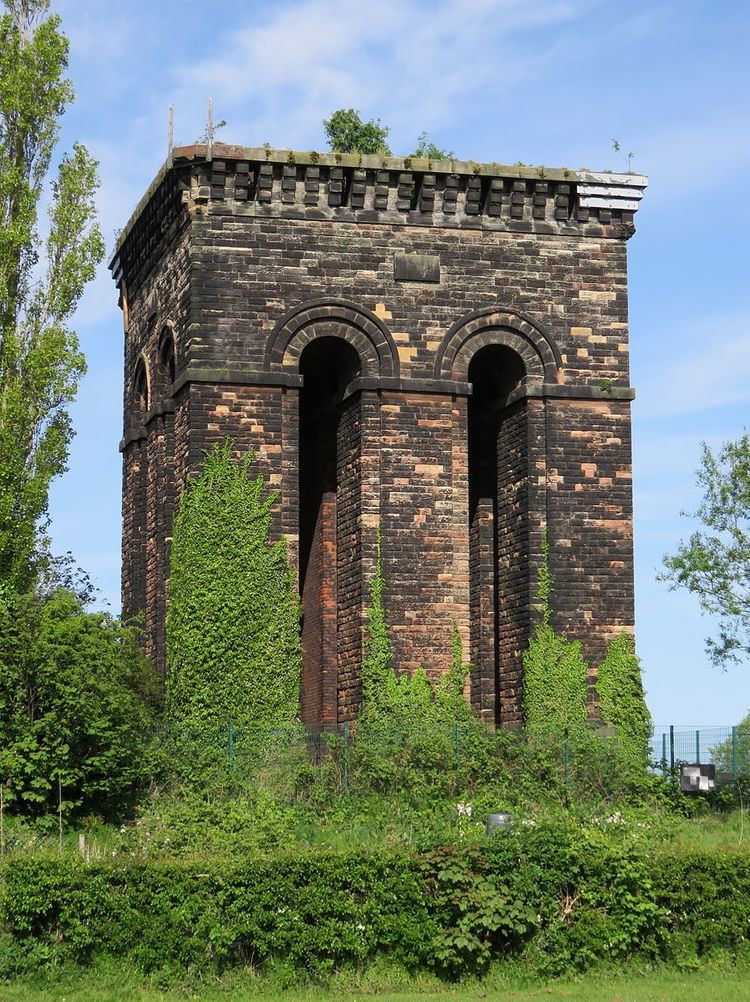Country England Height 17 m Construction started 1853 | Completed 1854 Opened 1854 Designated as world heritage site 22 March 1976 | |
 | ||
Official name Water tower on Tower Hill Address Tower Hill, Ormskirk L39 2DX, UK Similar St Mark's Church - Scarisbrick, Simonswood Hall, All Saints Church - Hesketh, Burscough Priory, Holy Trinity Church - Tarleton | ||
Tower Hill Water Tower is a disused water tower and local landmark in Ormskirk, Lancashire, England. Situated on the east side of Tower Hill, it was built between 1853-4 for Ormskirk Local Board of Health, and is reputed to be the oldest remaining water tower in the country. It was awarded Grade II* listed status in 1976, and is on the Heritage at Risk Register. The area immediately surrounding the tower has been used as allotments since the mid 20th century.
Contents
Structure
The tower is built in the Romanesque Revival style, constructed of coursed, squared sandstone, and arranged in a square plan. On each side are two narrow full-height Romanesque arches, all with stepped surrounds and arch-bands, and linked by an impost band. Above the arches is a plain frieze with carved grotesques at the corners, topped with machicolated corbelling. The stone is a pale red and mottled form of Ormskirk Sandstone, probably extracted from nearby Ruff Wood.
In its present state, the tower stands at a height of approximately 17 metres (56 ft). Originally, the stonework was surmounted by a metal water tank with a pitched slate-covered roof, which added an extra 6.2 metres (20 ft) to the height of the structure. Due to its poor condition, the tank was removed in the early 1990s.
Proposed developments
Planning permission was granted in 1988 for the conversion of the tower into a single dwelling, though the scheme was never implemented. Subsequent applications to convert the tower into offices or an apartment block were either refused or withdrawn. A more recent application for conversion into seven apartments was made in 2004, though this has also been rejected, and an appeal against the decision was dismissed in April 2008.
Development of the site has met with opposition from local residents, and local Conservative councillor Adrian Owens was amongst critics of the most recent application.
